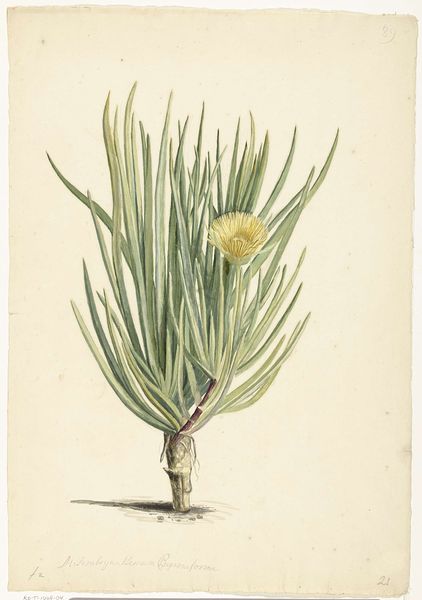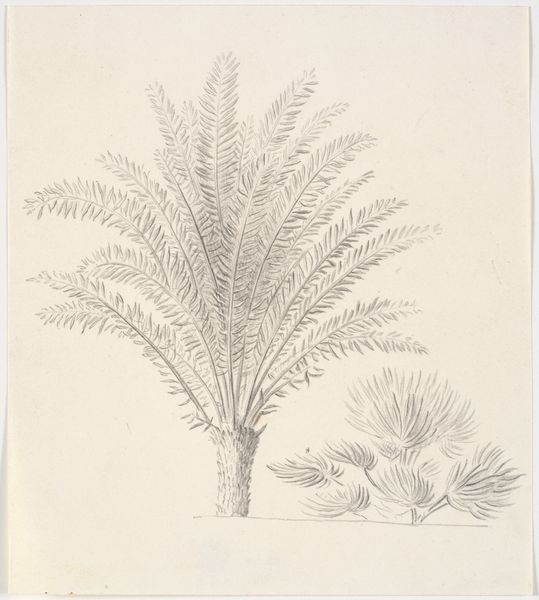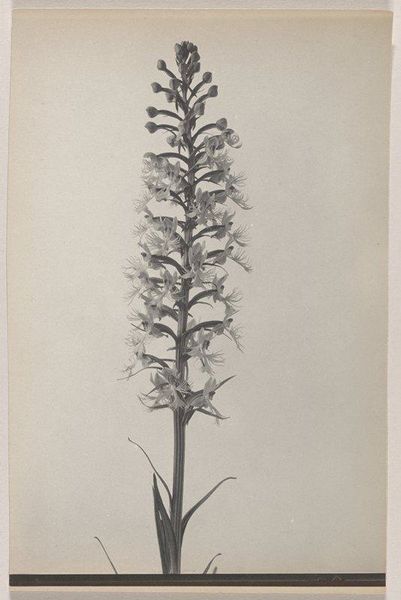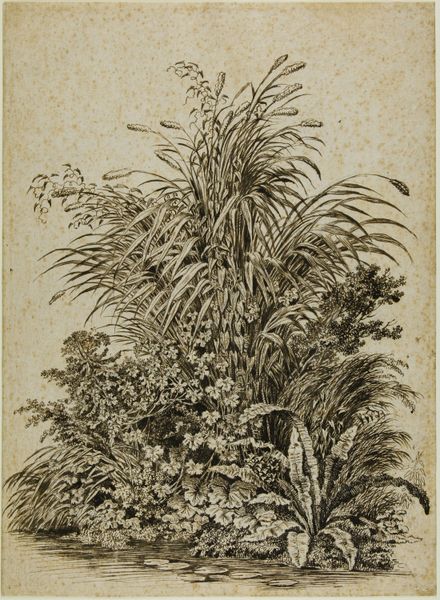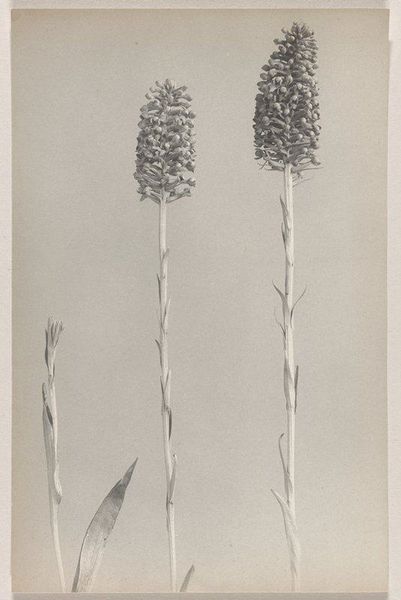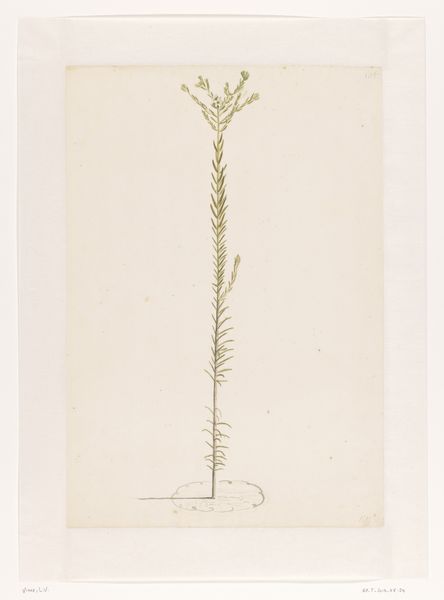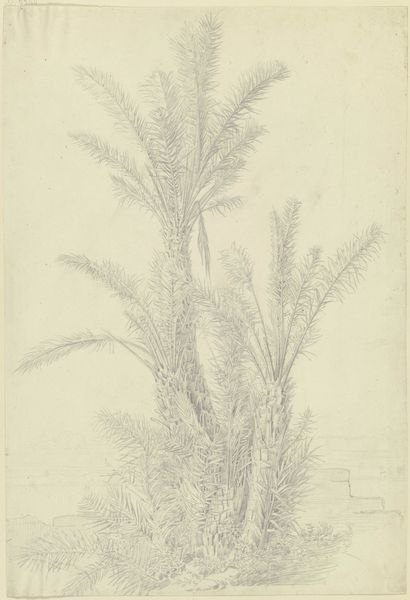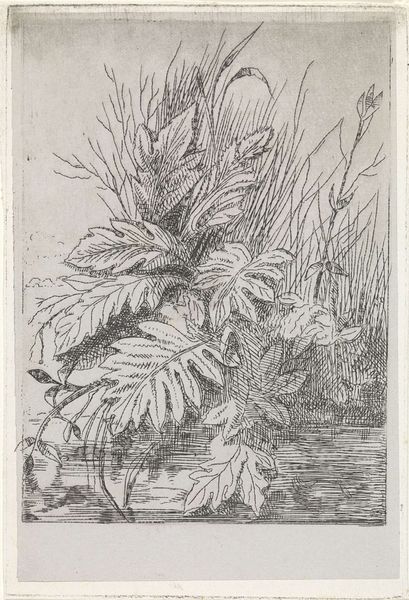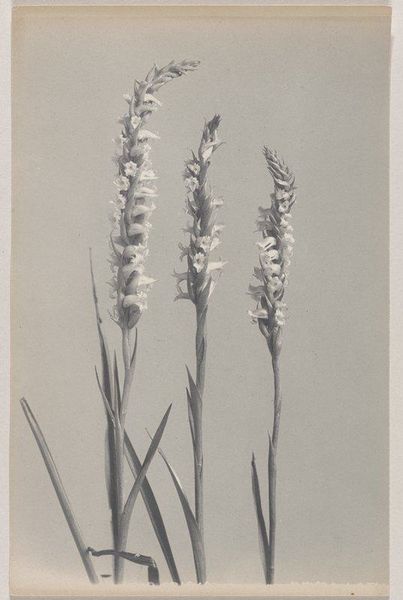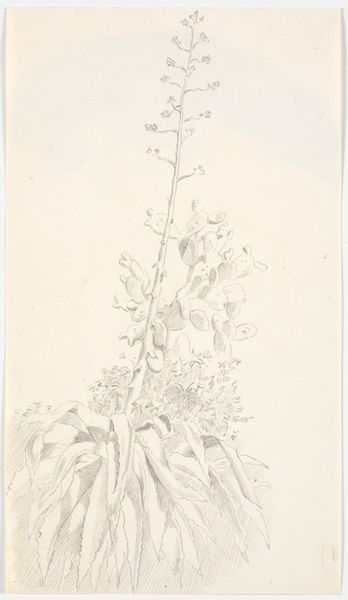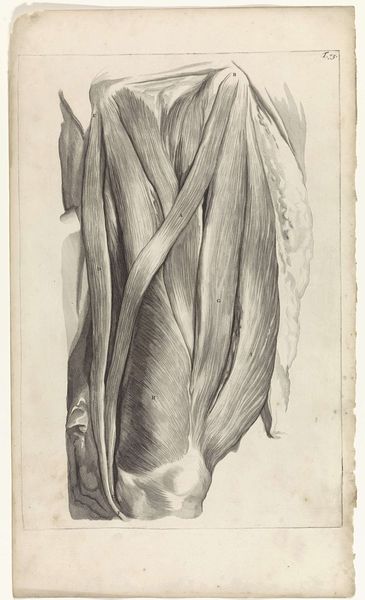
print, engraving
# print
#
plant
#
line
#
engraving
Dimensions: height 133 mm, width 95 mm
Copyright: Rijks Museum: Open Domain
Editor: This print, "Tarwe- of roggeplant," or "Wheat or Rye Plant" by Bernard Picart, from the early 18th century, is strikingly simple. The lines are so clear and precise, and somehow that precision elevates it. It almost feels… reverential. What jumps out at you? Curator: It's interesting that you describe it as reverential. I immediately think about the social and economic role of wheat and rye during that period. Think about the Dutch Golden Age, of which Picart was very much a product: agriculture fueled prosperity, and prosperity in turn funded art and science. How might this print be read as an assertion of Dutch economic strength and independence? Editor: That’s a perspective I hadn't considered. I was focused on the art itself, the clean lines and the close observation of the plant, but you’re right; this image exists within a larger context of Dutch commerce and national pride. So, a seemingly simple botanical study becomes a political statement? Curator: Precisely! Consider also the medium: engraving. Prints like these were widely circulated. They were affordable, and could be included in books or hung on walls. This accessibility is crucial; art was becoming more public, more democratic, and tied more tightly to the values and identity of the Dutch Republic. What sort of viewer did Picart imagine for this image? Editor: I imagine he was thinking of a fairly broad audience, from farmers to merchants, perhaps even scientists, who all benefited from the success of agriculture. Seeing it as more than *just* a picture, it reflects shared prosperity and stability of Dutch society in a way I hadn't appreciated. Curator: Exactly. It moves the art from a visual document to a document about social structure and power relations. What initially read to you as "reverential" can also be read as a symbol of societal power structures, a tool through which social ideals can be perpetuated. Editor: I hadn't really grasped how deeply interwoven art is with the socio-political landscape. Thanks!
Comments
No comments
Be the first to comment and join the conversation on the ultimate creative platform.

